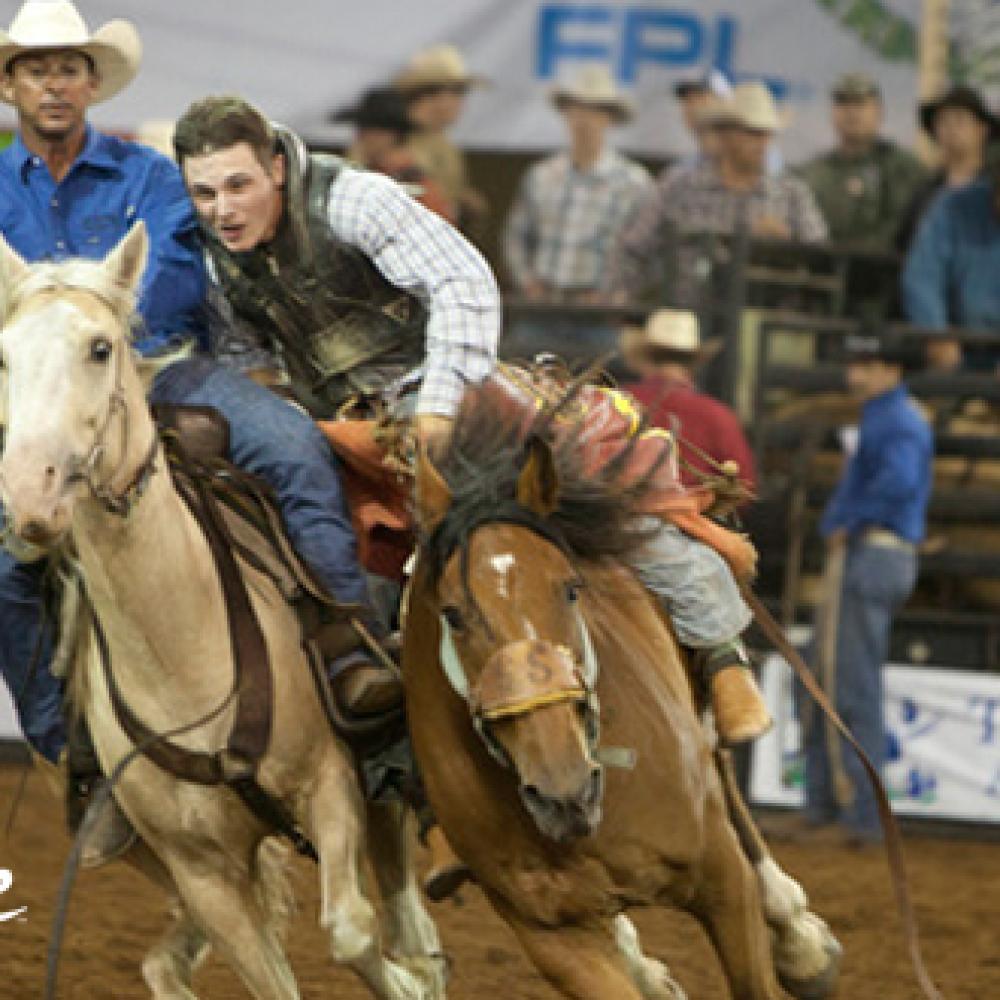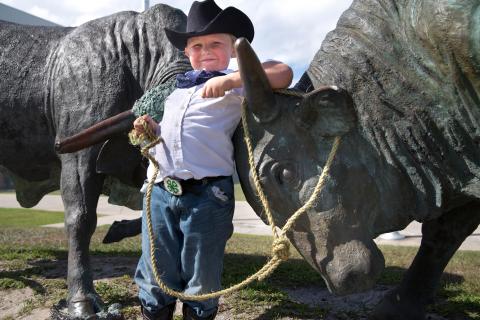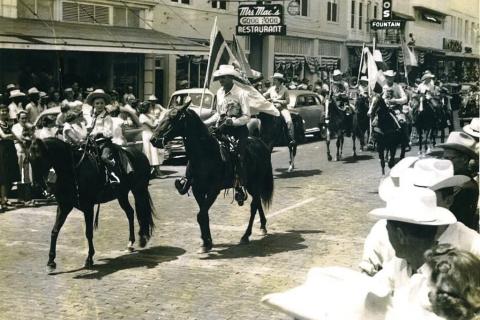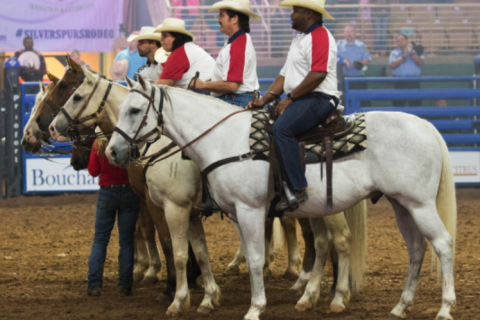Article
Giddy Up: The History of Rodeos in Kissimmee, Florida
Did you know that Kissimmee is in the heartland of cowboys and cowgirls?

Sorry, Texas, but Florida was first when it comes to cowboys in the United States.
In 1521, Spanish explorer Juan Ponce de León brought horses and seven Andalusian cattle to Florida. The descendants of those animals shaped the Sunshine State's destiny and led to our love affair with rodeos, where cowboys and cowgirls need strength, speed and bravery to compete. Look no further than Kissimmee's Silver Spurs Arena in Osceola Heritage Park, a popular venue for rodeos.
Heritage has a lot to do with rodeos, which have an estimated 30 million fans in the United States and Canada.
"Most riders are second, third, fourth-generation cowboys," says Jim Bainbridge, spokesman for the Professional Rodeo Cowboy Association. "They grew up with it and they love it."
While a child in the suburbs might grow up with a basketball hoop in his yard, farm children grow up with animals in their yards, so rodeos are part of their lives.
There's the competition and challenge, the music and lights, the electricity of the events and the camaraderie of the crowd. The contests-riding bulls, breaking broncs-are rooted in ranching, acts that working cowboys and cowgirls do every day.
It's that blend of community spirit, history and athleticism that you will enjoy at the rodeo as you marvel at the cowgirls and cowboys who risk their bodies against powerful animals.

Cowboys of all ages will enjoy Silver Spurs Rodeo
Early Days
Being a cowboy has never been easy, but it was especially tough in early Florida.
Without fences, cattle wandered into swamps. You shared the land with alligators, bugs, heat, humidity and hurricanes. But the cow hunters were industrious. Venturing into woods and swamps, they rounded up cattle and snapped 12-foot leather whips that made a pistol-like "crack," leading to the nickname "cracker cowboys."
Some owned ranches while others operated from rough-and-tumble "cow camps," like one in Kissimmee Valley. As journalist Terry Tomalin noted, "locals called it 'Cow Town,' which was a good fit since most of its residents had hooves."
Some cowboys became very wealthy. Jacob Summerlin began working with cattle in 1827, when he was only seven years old. He earned his fortune by raising cattle in Kissimmee and elsewhere and was one of Florida's richest men by the time he was 40. But he gave away much of his money and stayed low-key, calling himself just a "sun-baked old Florida cracker."

Rodeo Fun
Summerlin's modesty is carried on by most rodeo performers, who shun the overdone self-celebrations of some athletes. They know it's not just talent or brute strength that wins. In steer wrestling, for example, leverage is needed to stop the steer and tip it over to get all four legs pointing in the same direction.
Bainbridge says bull-riding is the single most popular event because it's exciting and dangerous, but rodeo fans come for "the whole package"-seven events in each show: saddle bronc riding, bareback riding, bull riding, tie-down roping, steer wrestling, team roping and barrel racing. All require skill and strength, whether being flung about by a bucking horse or navigating a trained horse through a barrel course at top speed.
And cowboys and cowgirls aren't the only ones in the arena.
There are specialty acts as well as "barrel men" and risk-taking clowns. Maybe Willie Nelson can do a sequel, "Mamas, Don't Let Your Babies Grow Up to be Rodeo Clowns."

Cracker Horses
Kissimmee's great setting for modern rodeos started in the 1940s, when a group called the Silver Spurs began holding events to honor the ranching way of life.
And when the cracker horse was close to extinction 25 years ago, Florida ranchers embarked on a campaign to save this hardy symbol of yesteryear. In 1989, only 31 cracker horses could be identified; thousands had been lost to cross-breeding and disease.
But the Florida Cracker Horse Association now registers and documents the horses, which tend to be smaller than most horses but able to withstand heat and bugs that fell other animals. They're also inexpensive and easily trained. Today, more than 1,000 cracker horses have been identified and registered, giving people a chance to enjoy the descendants of animals that once carried Spanish missionaries and others around Florida.
A sense of history has much to do with the desire to save the cracker horses.
The group's members recalled their parents and grandparents using cracker horses in their ranches. Cattle has always been a big industry in Florida; even with the influx of development, Florida remains one of the biggest cattle-producing states east of the Mississippi River.
They also appreciate the way many cracker horses walk. Their smooth, shuffling style lets them cover ground seemingly without effort.
"They're real good travelers," said Jim Levy, executive director of the FHCA.
Nearly 500 years after Ponce de León came here, cracker horses are still traveling trails and working Florida ranches.